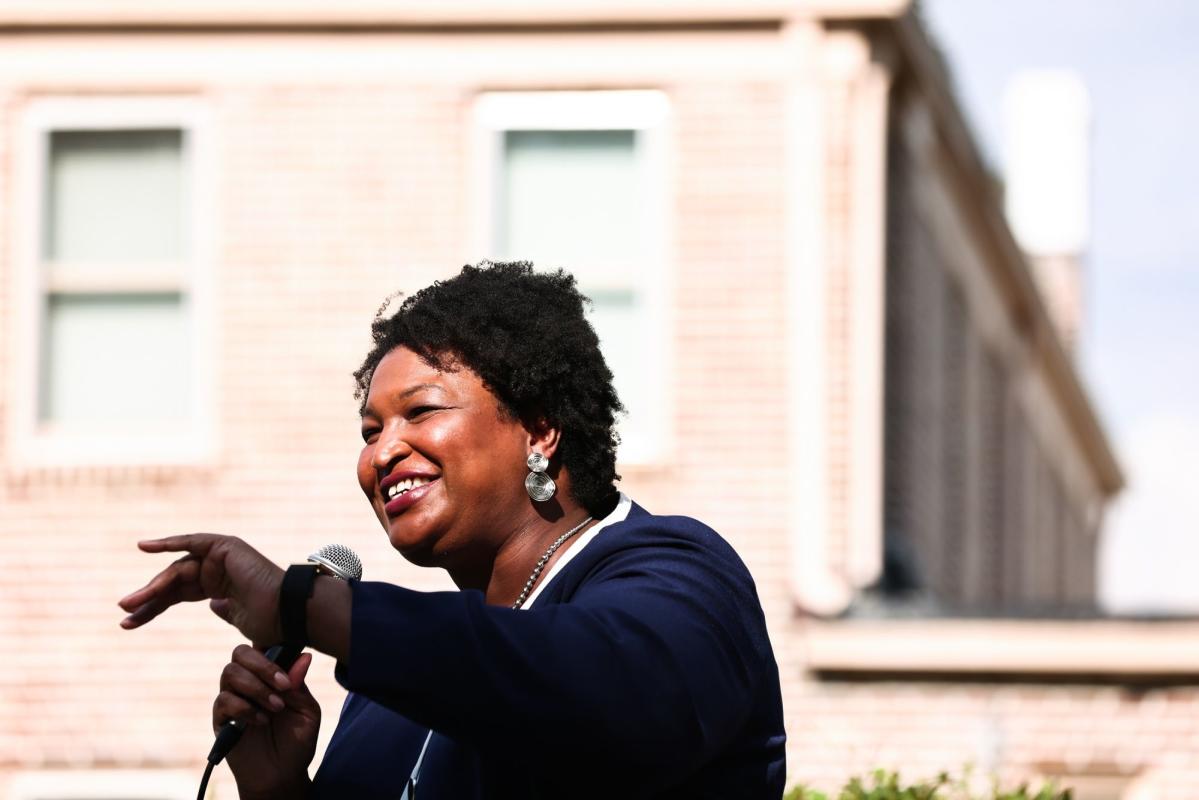
(Bloomberg) — The get-out-the-vote infrastructure that turned Georgia blue two years ago is short on the cash from donors that made it possible, according to its leaders.
Most Read from Bloomberg
The phalanx of nonprofits that knocked on 10 million doors in the state in 2020 is likely to hit fewer than 4 million by November, according to Greg Speed, president of America Votes, a national group that coordinates and steers funding to turnout efforts. America Votes said it will spend less than $20 million in Georgia this year, half of what it spent two years ago.
“A lot of us, given Jan. 6, given what’s on the line, we thought it was reasonable to expect new donors,” he said. “But it just isn’t out there.”
Donations are flowing generously to top Democratic candidates but not to the coalition of nonprofits that delivered the huge turnout that boosted the party in 2020, said Nse Ufot, executive director of the New Georgia Project. The group was formed by Democrat Stacey Abrams in 2014 to get the state’s growing minority population to the polls.
This year, the organization’s funding is down by half from the $40 million it took in two years ago, according to Ufot.
“Donors understand that Georgia is in play, that it’s super-competitive and that their investment could make a difference,” Ufot said. “But they have zero clue about how it actually happened two years ago. They don’t have a full picture of what it takes to drag out that kind of historic victory in Georgia.”
To repeat that feat, she said, would take another “multiracial, multiethnic, all-shoulders-to-the-plow strategy.”
That strategy was honed by Abrams, who is on the ballot next month in a rematch with Republican Governor Brian Kemp, along with Democratic US Senator Raphael Warnock, who is defending his seat against former University of Georgia football star Herschel Walker.
Senate Balance
Money for Democrats flooded Georgia in 2020, particularly after Joe Biden won and now-senators Warnock and Jon Ossoff made it into January 2021 runoffs. It was the race that decided control of the Senate, and the only political game in town at the time.
Millions flowed to the turnout effort through not only America Votes but also an affiliate of Fair Fight Action, a voting-rights group also founded by Abrams. Donations to Fair Fight soared to $51 million in 2020, compared with $11 million in 2019, according to tax records.
The result was an extraordinary, micro-targeted, get-out-the-vote effort: Cabbies, domestic workers, unemployed hotel staff and canvassers hired by Black, Hispanic, Asian-American and Pacific Islander groups all fanned out across the state.
If voters couldn’t get to the polls, canvassers paid for Ubers to get them there. If a newly naturalized citizen was afraid to go to her precinct alone, she got an escort. One group contacted every Hispanic voter in Georgia. Phone bankers spoke dozens of languages from across Asia.
Misperception Seen
Cliff Albright, co-founder of the national group Black Voters Matter Fund, a big Georgia turnout player, said he believes that donors think that giving to individual campaigns is enough.
“The misperception is that the money is flowing through the candidates, that money going to Stacey Abrams or Senator Warnock, that it’s worked its way to the people who turned out the vote,” Albright said.
“We had a whole ecosystem of community groups and organizations that made it possible, with a lot of support from individuals in large amounts and small,” he said. “This year, that hasn’t been the case.”
It’s often difficult to generate voter enthusiasm during midterm elections, said Hillary Holley, executive director of Care in Action, which represents domestic workers and canvassed heavily in 2020. And there also may be a sense of complacency without the polarizing Donald Trump on the ballot.
“We are starting to see high-dollar donors saying ‘OK, Trump is out of office. Now we can get back to normal,’” she said.
In an interview, Abrams said she was aware of the turnout network’s struggle.
“We know that across the board, the resources that poured in in 2020 have not shown up in 2022,” Abrams said. “I know all the organizational leaders are doing their best to remind people of how vital Georgia will be.”
Most Read from Bloomberg Businessweek
©2022 Bloomberg L.P.




